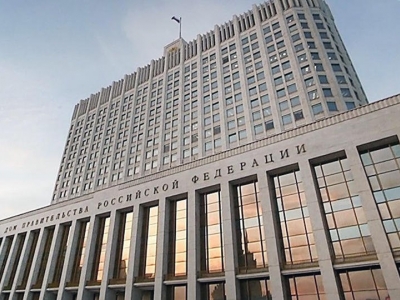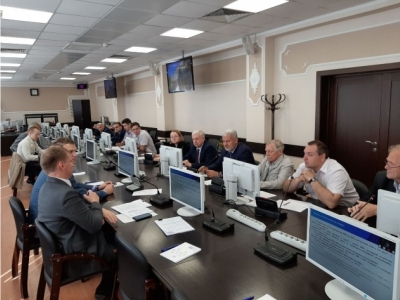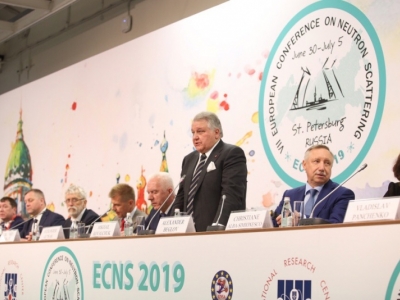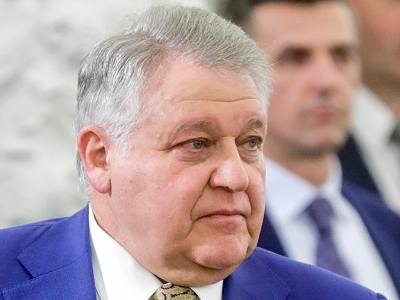Mikhail Kovalchuk discussed the prospects for the development of megascience infrastructure
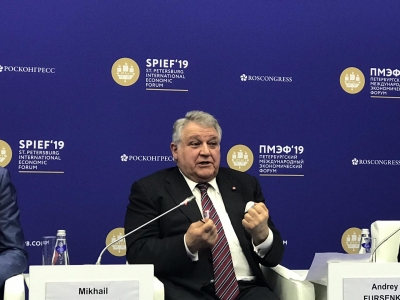
The President of NRC "Kurchatov Institute" together with leading Russian and foreign professionals discussed the priority areas of development of synchrotron and neutron research and the current status and prospects of international cooperation in the development of megascience infrastructure. The event took place at the St. Petersburg International Economic Forum (SPIEF).
Nowadays, unique research and technological facilities and complexes of "megascience" class form the basis of the scientific potential of developed countries. According to Mikhail Kovalchuk, the possession of such facilities for many countries is an important indicator of the level of technological development.
"These facilities emerged as a kind of "consequence" of the development of the atomic project... The main countries that created these installations were the USSR and the USA <…> Today we are seeing a global change of situation in the megascience area. <…> Now it is an important element of obtaining fundamental knowledge, studying the properties of matter. Even such countries as Spain and Italy began to build synchrotron sources, despite the fact that they are members of the European Synchrotron Radiation Center ESRF. Now these facilities became the basis for the metrological assurance of modern production." — reported Mikhail Kovalchuk in his speech.
At the same time, according to Mikhail Kovalchuk, "we were intellectual donors for Europe." As many important elements for the Large Hadron Collider were created with the participation of Russia and the Russian Tokamak, which was made in the Kurchatov Institute in the mid-1950s, was the prototype for ITER (International Experimental Thermonuclear Reactor), which is under construction at the moment.
"We have a strong base for cooperation with Europe," — said NRC "Kurchatov Institute" leader.
Talal Abu-Ghazaleh, the founder of Talal Abu-Ghazaleh Global, expressed his desire to collaborate in the field of synchrotron research. "The Hashemite Kingdom of Jordan has a SESAME synchrotron. <…> We would like to build strong relationships with Russia in science and education, to conduct research, including in the mode of immediate communication."
Russia, having become a part of the global landscape in the field of megascience, is beginning to develop its base on a fundamentally new level, Mikhail Kovalchuk noted. The set task answers large challenges, defined by the strategy of the scientific and technological development of the Russian Federation. Today, Russia has developed a program for the development of synchrotron and neutron research for 2019–2027, which purpose is to provide a scientific and technological breakthrough for Russia in this important area. First of all, it is the construction of the fourth-generation unique synchrotron radiation source ISSI-4, which will contribute to breakthrough development in many areas: from materials science, nanobiotechnology and medicine, to research of cultural heritage objects.
The use of natural science methods in the study of cultural heritage is a relatively new and actively developing area in Russia, which is successfully implemented, including by the Kurchatov Institute.
Alexander Yanenko, Director of Federal Institution "State Research Institute of Genetics and Selection of Industrial Microorganisms of the National Research Center" Kurchatov Institute", is convinced of the need to use "megascience" class facilities for the development of biotechnologies.
Megascience facilities are also irreplaceable in the process of creating fundamentally new steels and alloys for shipbuilding, which NRC "Kurchatov Institute" - CRISM "Prometey" does. "All the alloys developed by Prometey have been created, in part, thanks to the Gatchina reactor," the President of the NRC "Kurchatov Institute" noted.
According to Mikhail Kovalchuk, the use of megascience facilities will provide a transition to a fundamentally new nature-like technological structure. The created research infrastructure is intended to become a center of concentration and building up the intellectual potential of the nation. International scientific and educational megaclusters can be formed on its basis.
Source (in Russian): http://www.nrcki.ru/


